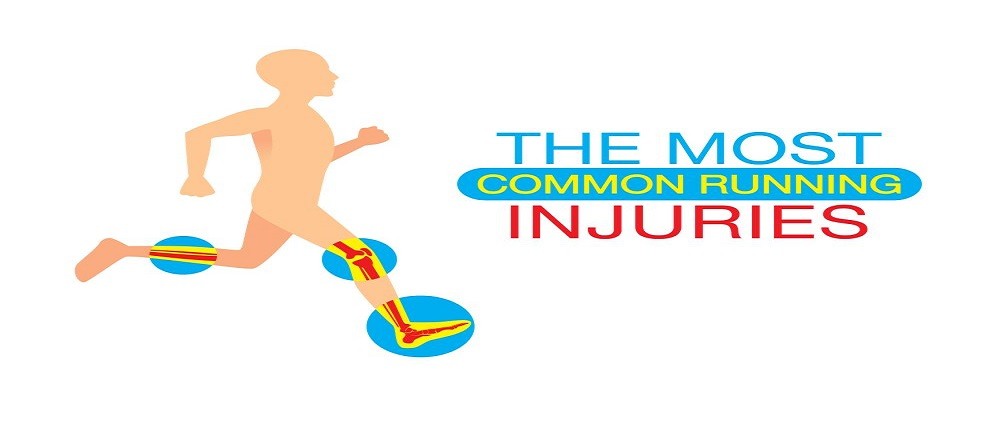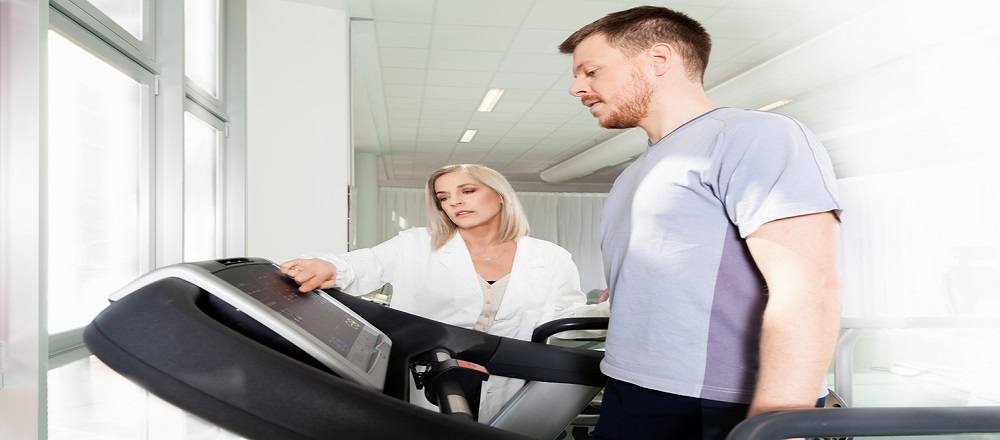 Whether an Olympic athlete or a casual weekend jogger, a running injury can happen to anyone. Training for your next 5k, 10k, or marathon can quickly go sideways when you suffer an injury. But how do you know when you can continue training for a race or when you need to take a break? As you work your way up to your ideal time and pace, the last thing you want to worry about is a running injury dashing your chances. A running injury can take a toll both physically and emotionally, especially when you are used to staying active. Unfortunately, many types of injuries affect runners of all levels. Here are some common running injuries that can occur during race training and how you can get back on your feet and hit the pavement again as soon as possible.
Whether an Olympic athlete or a casual weekend jogger, a running injury can happen to anyone. Training for your next 5k, 10k, or marathon can quickly go sideways when you suffer an injury. But how do you know when you can continue training for a race or when you need to take a break? As you work your way up to your ideal time and pace, the last thing you want to worry about is a running injury dashing your chances. A running injury can take a toll both physically and emotionally, especially when you are used to staying active. Unfortunately, many types of injuries affect runners of all levels. Here are some common running injuries that can occur during race training and how you can get back on your feet and hit the pavement again as soon as possible.
Common Running Injuries
Knowing what type of running injury you are dealing with will help you determine whether or not it is safe to keep training. When in doubt, you should always reach out to your local Snellville orthopedic doctor or physical therapist for support. Here are seven common running injuries, their symptoms, and how they might affect your race training.
Runner’s Knee
Runner’s knee is the common name for a condition called patellofemoral pain syndrome. This condition comes by its name honestly because it is a common knee injury among runners. Runner’s knee will cause pain where your kneecap meets the thigh bone because of damage to the cartilage in the area. This cartilage is designed to prevent the bones in your knee joint from rubbing together. Misalignment of the kneecap or repetitive stress on cartilage and other soft tissues that make up the knee can lead to an injury like runner’s knee. Pain with runner’s knee typically occurs while you engage in activity, from going for a jog to walking up and down stairs. You may also notice your kneecap makes a grinding or clicking sound as you bend and straighten the knee or that your kneecap is tender to the touch.
Shin Splints
Shin splints is the common name for a condition called medial tibial stress syndrome. It is a type of injury that causes pain along the tibia, or shin bone. Shin splints are common in athletes because of the repetitive stress on the shinbone and surrounding tissues. Common symptoms of shin splints include tenderness along the front of your lower legs, or shins. This area may become sore and painful, especially while engaging in certain activities. For some people, the pain and discomfort of shin splints may continue even when they are not currently active. This type of injury is common when you are new to an activity or have changed up your training routine. Increased activity adds additional pressure and strain on the muscles, tendons, and tissues that support the shin bone, leading to shin splints.
Achilles Tendonitis
Achilles tendonitis refers to an injury that affects the Achilles tendon that connects the back of your lower leg and foot. Repeated stress on this tendon can lead to pain and inflammation in the area. This condition commonly develops gradually over time or if you start to change the distance or duration of your runs. When you do not give the body enough time to recuperate in between runs, the Achilles tendon may stay inflamed and at greater risk for a tear. Training and running in shoes with poor support can also lead to Achilles tendonitis.
Patellar Tendonitis
Patellar tendonitis is more commonly known as jumper’s knee. While commonly associated with basketball players, jumper’s knee can also affect runners. The repeated pressure on the patellar tendon that connects the kneecap to the shinbone can lead to pain and inflammation. The patellar tendon can weaken over time due to overuse and too much activity without enough rest. Muscular imbalances or tight leg muscles can also put you at greater risk for developing patellar tendonitis.
ITB Syndrome
ITB syndrome refers to the iliotibial band that runs outside the knee. When the IT band rubs against the femur, it can cause tissue inflammation. This thick band of tissue runs from your hip to your shin and engages when you bend and extend your leg. Repetitive bending and extending the knee with activities like running can irritate nearby tissue and cause pain and other symptoms. Running on uneven terrain and in worn-out shoes puts you at greater risk for ITB syndrome. ITB syndrome can cause pain right after your foot hits the ground with each step as it sends a shock wave up your leg. The pain may worsen with certain activities, like going up or down stairs, and can linger after you stop exercising.
Plantar Fasciitis
Plantar fasciitis causes pain along the heels and soles of your feet. The plantar fascia is a ligament that connects your toes to your heel. When this fibrous tissue becomes irritated or inflamed, it can lead to pain and discomfort. People who stand on their feet for hours at a time experience plantar fasciitis more often. Running and other activities with repetitive pressure on the soles of the feet can also lead to plantar fasciitis. With every step you take, the plantar fascia supports your foot’s arch and helps absorb each movement’s shock. People with high arches, flat feet, or tight calf muscles are at greater risk of developing plantar fasciitis.
Stress Fractures
A stress fracture refers to tiny cracks in your bones that can lead to pain and tenderness. Stress fractures are commonly caused by repetitive stress on the bones, like with long-distance running. Bones weakened by certain conditions like osteoporosis can also put you at greater risk for developing a stress fracture. Runners tend to experience stress fractures in the lower legs or feet because these areas bear the most weight while running. As you train for your next race, tired and fatigued muscles can put you at greater risk for a stress fracture because they cannot absorb additional shock. This puts additional stress on the bones in your legs and feet, leading to tiny cracks or stress fractures.
Should I Keep Training or Take a Break?
The most important thing you can do if you suspect a running injury is to make time to rest. Taking a break from the activity, even if only for a day, can take pressure off aching muscles and allow the body’s natural healing process to begin. However, certain running injuries may require more rest and time away from your favorite activity than others. Pay attention to where the pain occurs and what activities make it better or worse. It also helps to note whether you experience pain before, during, or after running and other activities. Talk to your orthopedic doctor as soon as possible to avoid further damage and ensure you can effectively focus on your recovery.
Pay Attention to Red Flags
Pain is a common symptom among injuries for a reason. It is the most obvious red flag that something is not working correctly. When training for your next race, you might be tempted to ignore red flags and push through to hit your next goal. However, avoiding red flags can actually set you back further than if you head to the doctor’s office immediately.
Focus on Warming Up
In many cases, taking a training break does not mean stopping all activities. Your orthopedic doctor can talk to you about cross-training activities you can try that would not further aggravate your injury. Turning your focus to warming up your muscles will help you maintain strength and mobility while recovering from the injury.
Visit a Physical Therapist
 Meet with a physical therapist to learn safe and effective ways to recover from your injury and stay physically fit. A physical therapist will develop a personalized treatment plan to help you determine when it is safe to return to your regular routines. Physical therapy incorporates exercises that improve your range of motion, keep your muscles loose, and improve your overall strength.
Meet with a physical therapist to learn safe and effective ways to recover from your injury and stay physically fit. A physical therapist will develop a personalized treatment plan to help you determine when it is safe to return to your regular routines. Physical therapy incorporates exercises that improve your range of motion, keep your muscles loose, and improve your overall strength.
Visit AICA Orthopedics in Snellville to learn more about your running injury and how you can effectively train and preserve your health and mobility. The key to managing an injury is ensuring you take care of it properly from the start so you can enjoy running for many years. Our team of doctors at AICA Orthopedics includes orthopedic doctors and physical therapists who will work together to develop a treatment plan that helps meet your goals for recovery. We work with athletes every day and at all levels to help ensure their success on and off the field. Let us help you focus on recovering from your running injury so you can train for your next race and learn how to prevent injuries in the future.
